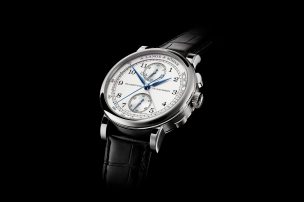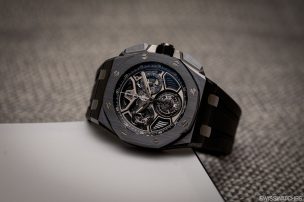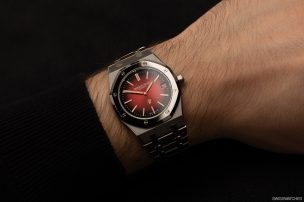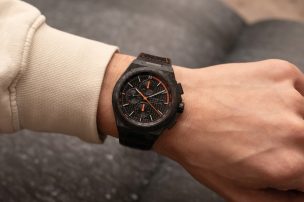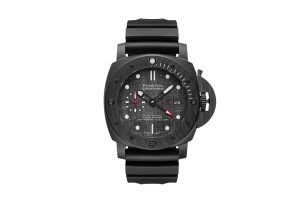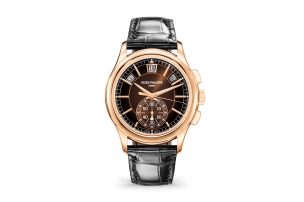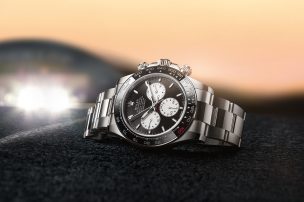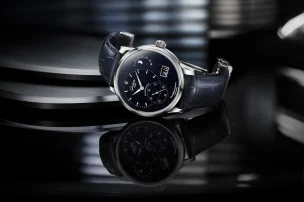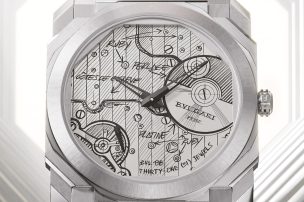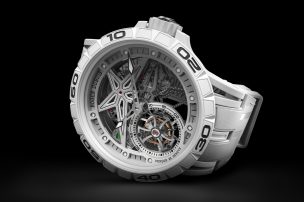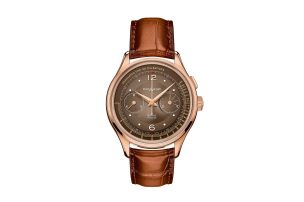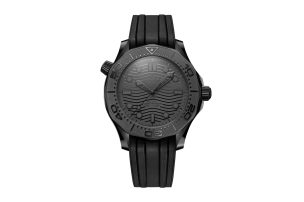

Live from Los Angeles: The Olympic 1932 Chrono Chime and the Speedmaster Chrono Chime
With the Olympic 1932 Chrono Chime and the Speedmaster Chrono Chime, Omega launched two evocative timepieces yesterday in Los Angeles. Both watches carry a high degree of historical heritage. Swisswatches was in attendance, reporting live from LA for this milestone in watchmaking, and was able to take a closer look at the two watches on site.
To understand the background and what made them possible, one must consider that Omega produced the world’s first minute repeater wristwatch in 1892. The two new numbered reissues link this same first wristwatch to the pocket chronographs used to time the 1932 Los Angeles Olympic Games. Omega made its debut as official sponsor at the time. Both Omega Chrono Chime watches are conscious of their stylistic roots in the past, with the Speedmaster reminiscent of the iconic CK2998, the first watch worn on the moon.

The interior, however, brims with modernity and innovation. This is a powerhouse unlike any other, with a calibre that is the first of its kind. Developed from scratch – and by hand – the Co-Axial Master Chronometer Calibre 1932 represents the fusion of a fully integrated chronograph and minute repeater. It is, in fact, the most complicated calibre Omega has ever produced. But this is not just any repeater, it displays the elapsed time of the chronograph instead of hours, quarters and minutes. This release of both watches clearly heralds the next chapter in Omega’s journey to ceaseless horological innovation and may feel like a resounding tribute to the skills of Omega’s watchmakers.
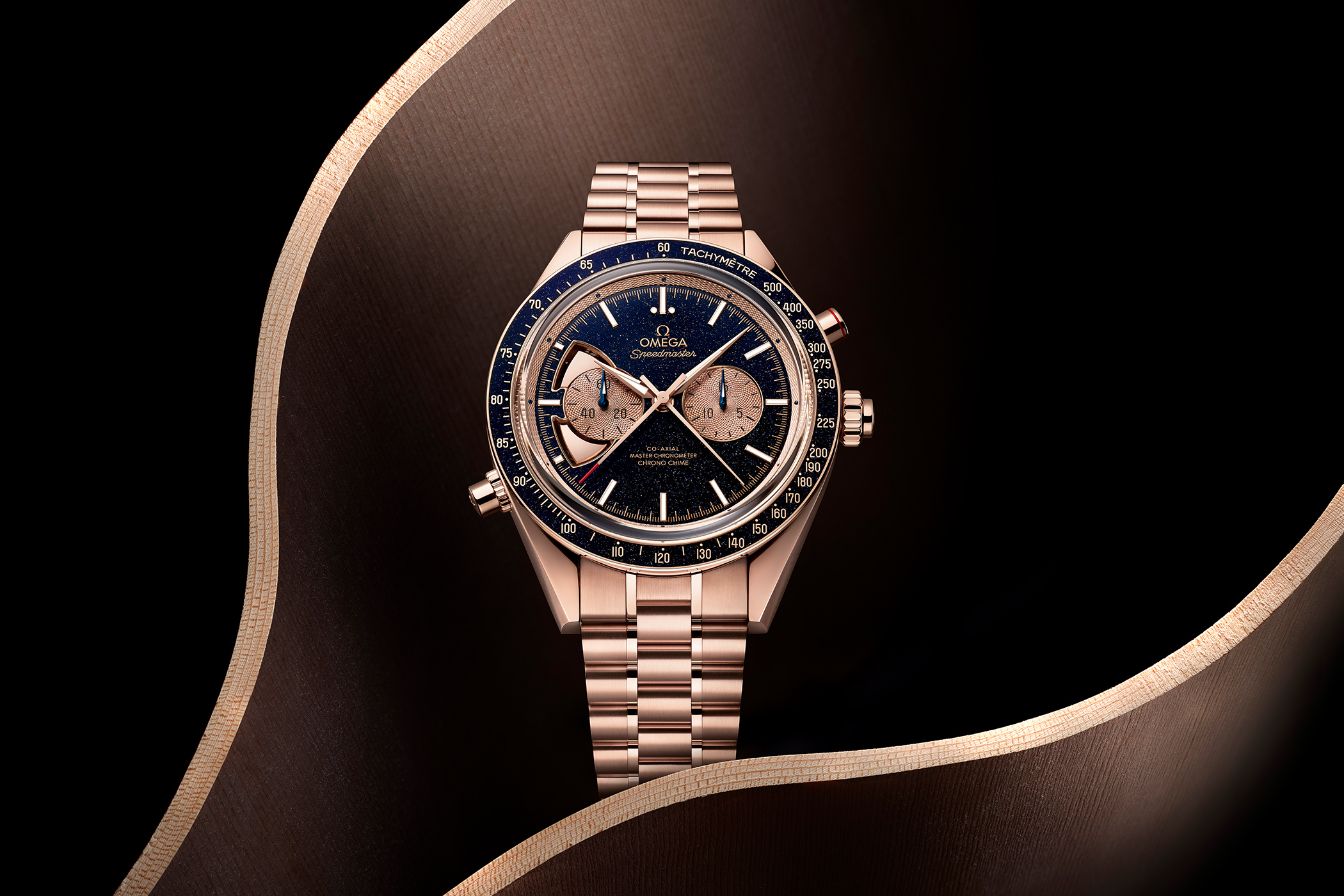
The Olympic 1932 Chrono Chime
A case with Midas’ touch
Omega has given the stylish 18k Sedna gold case a touch of Midas. Its aesthetic is reminiscent of the pocket chronographs used to measure time at the 1932 Olympic Games in Los Angeles. The case dimensions are similar to those of the Speedmaster Chrono Chime. The diameter here is 45 mm, the height is 16.93, and the distance between the lugs is 59.50 mm. Weighing 185.50 grams, it is quite a bit lighter than the Speedmaster.
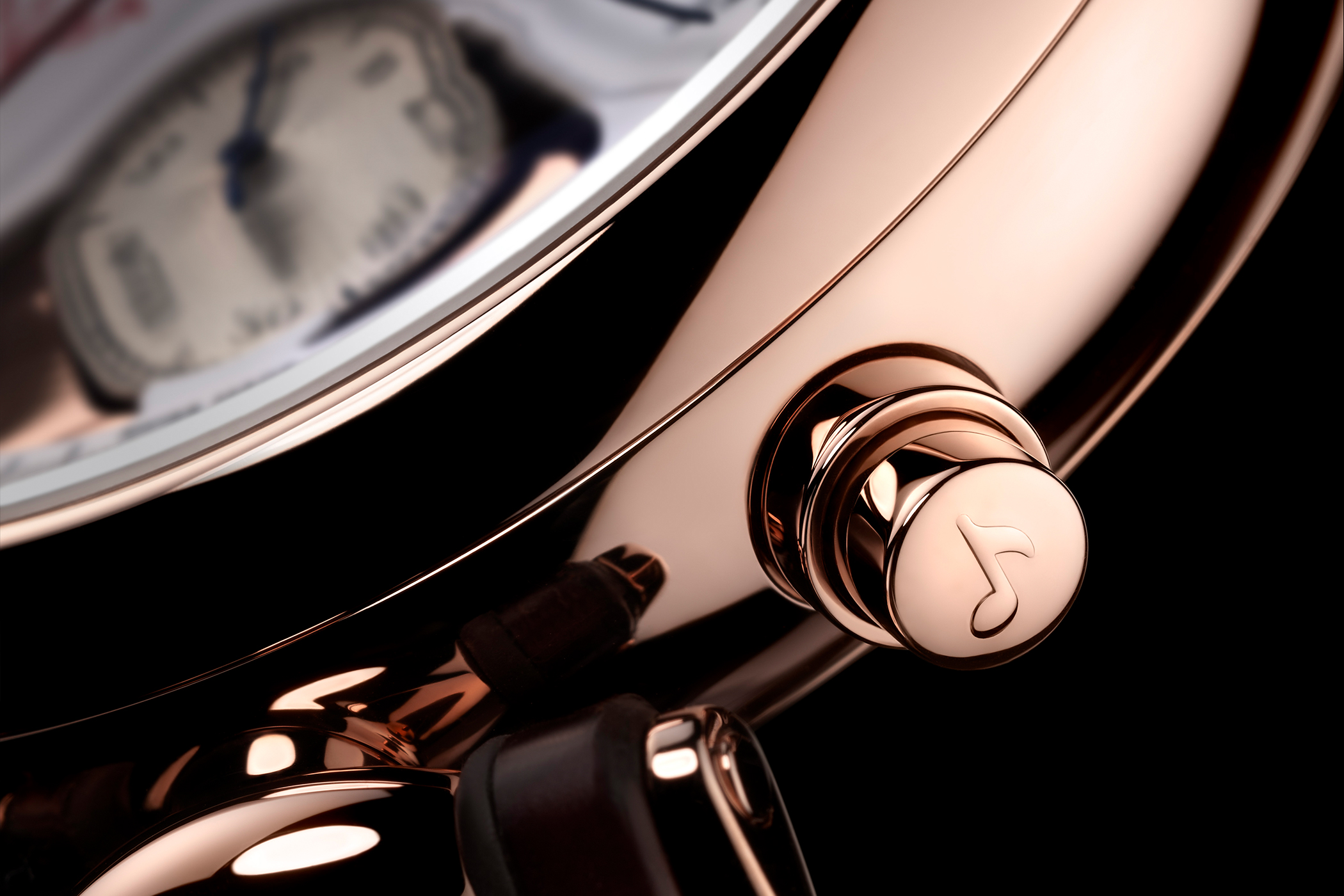
A special pusher at 11 o’clock operates the rattrapante (split-second). This has been given a touch of elegance with a polished ring filled with red hybrid ceramic that mirrors the look of the seconds hand. The bell push-piece at 5 o’clock, used to tell people the elapsed time, has a charming polished and embossed musical note. The caseback is engraved with the words Official Timekeeper of the Olympic Games, Co-Axial Master Chronometer and the number of the watch.
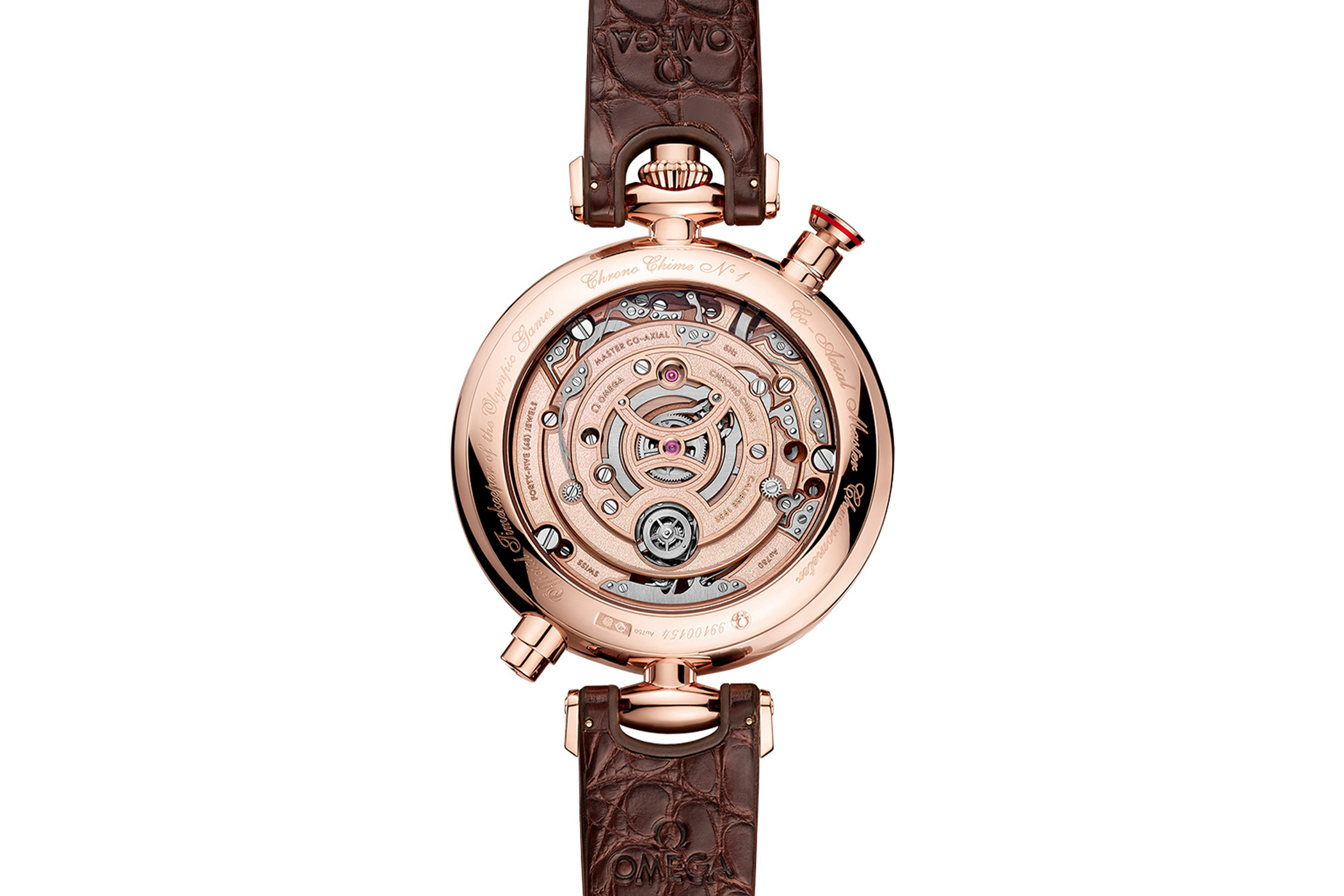
The Grand Feu enamel dial
The Grand Feu enamel dial features a hand-finished guilloché inner bezel in 925 silver and dials with Omega’s unique “exclusive acoustic wave” pattern. These are a visual representation of the sound waves produced by the watch’s chimes. The central hour and minute hands in 18K Sedna gold are coated with blued PVD, as are the small seconds hands at 6 o’clock and the 15-minute recorder at 12 o’clock.
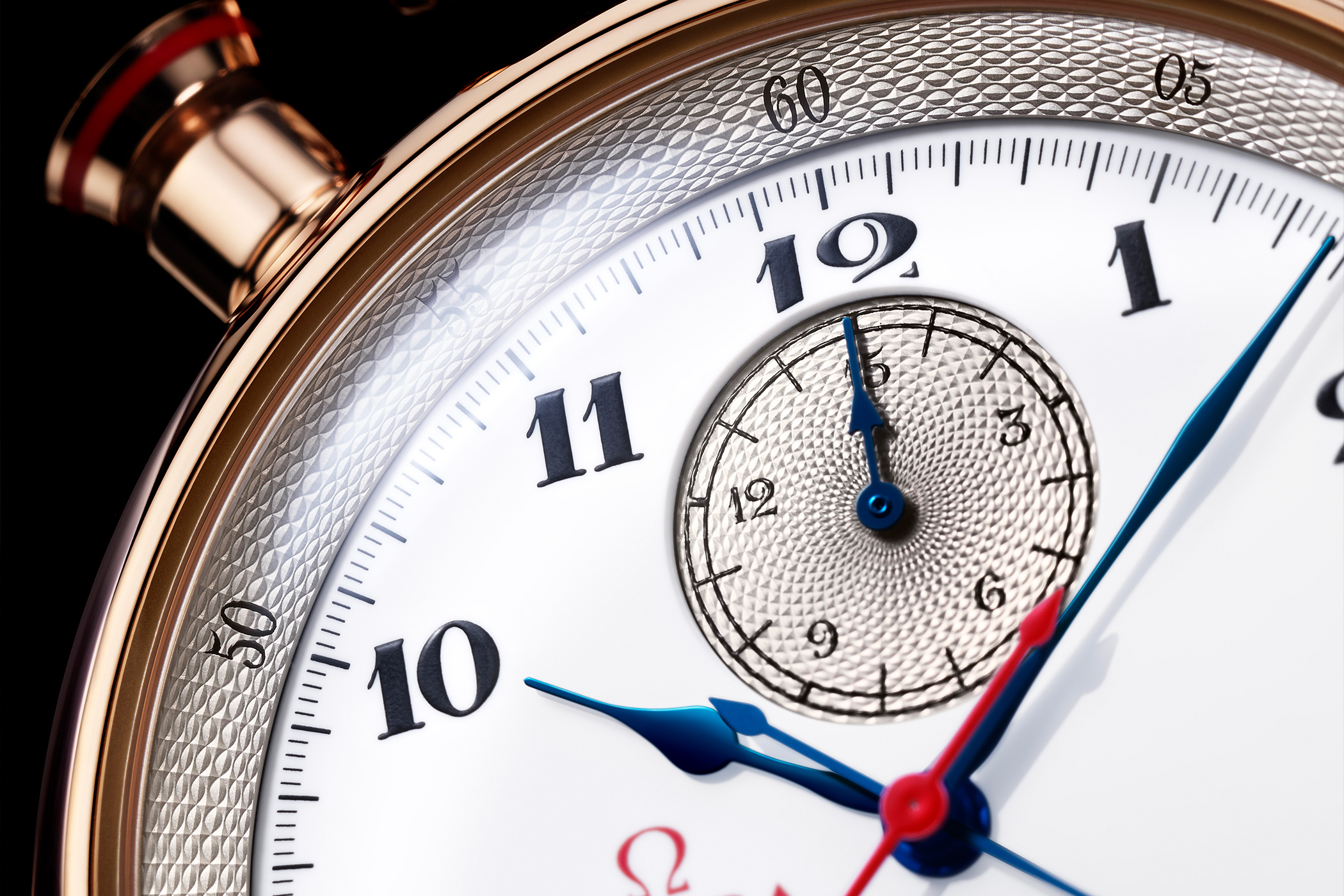
The subdial at 6 o’clock reveals the two hammers, which have the optimum effect when striking the 18K Sedna gold gong and are fitted with a hardened steel insert. The red lacquered second hand allows for such optimal readability. Last but not least, the Arabic numerals and the minute track in black “Petit Feu” enamel pay further homage to the year 1932.
The Speedmaster Chrono Chime
The case
Of the two new watches, the Speedmaster Chime is the more everyday version, taking many design features from the famous Speedmaster. But while the typical Speedmaster is normally 42mm in diameter, the intricate new piece is housed in a larger 45mm case. Added to this is a substantial height of 17.27 mm – no wonder given the intricate mechanisms at work inside. Made of 18-carat Sedna gold, the case is inspired by the second-generation Speedy case, the CK 2998. This in turn is a nod to Omega’s impressive cosmic heritage, as the CK 2998 was the first watch worn in space by American aviator Wally Schirra 60 years ago.
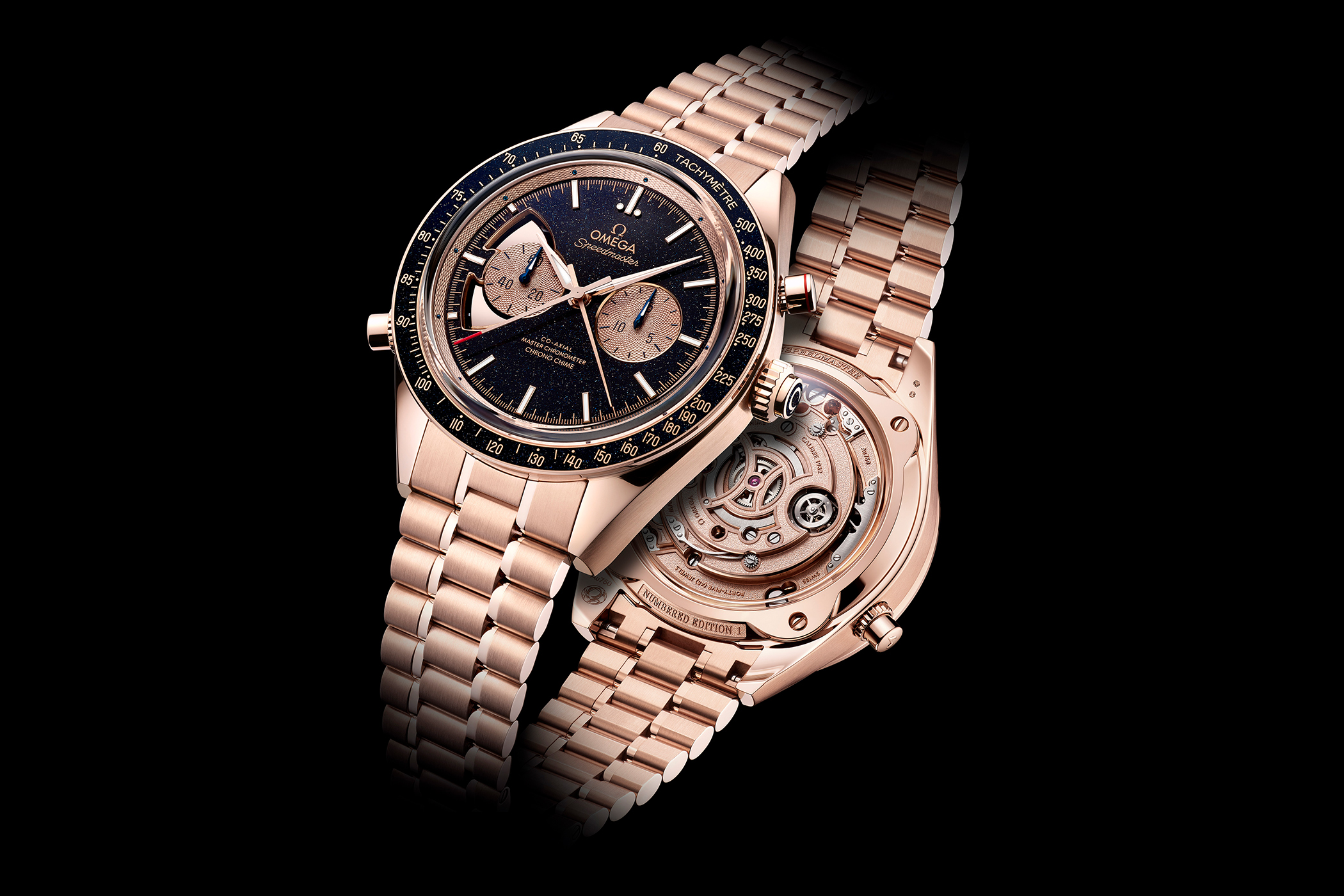
The Omega Chrono Chime dial
The dial of this special edition is made of blue aventurine grand feu enamel and features dials in 18-carat Sedna gold (Omega’s proprietary red gold alloy). Unlike the typical Speedmaster dials, these unusual counters feature the aforementioned exclusive guilloché pattern in the shape of an ‘acoustic wave’ in homage to the Olympic Games. The inner bezel is also made of Sedna gold, while the bezel with the tachymeter scale echoes the fascinating blue aventurine dial.
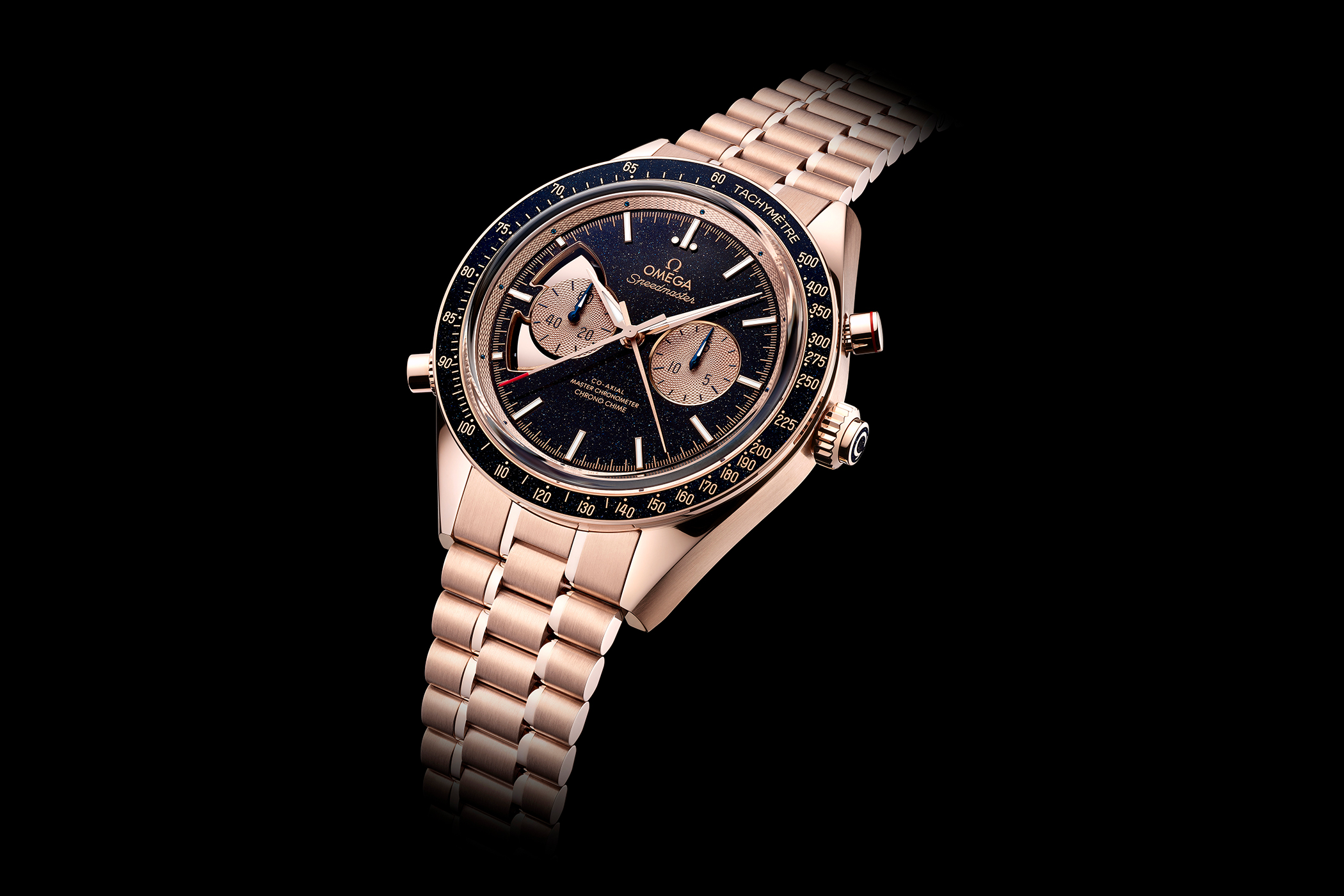
The Speedmaster Chime indicates the time with Sedna gold hands and hour markers in alpha form, while the hands of the chronograph are made of blued steel. The chronograph hands and red-tipped seconds hand, on the other hand, are in PVD Sedna gold. Super-LumiNova ensures 24/7 readability of the watch. The most important feature, however, is at 9 o’clock, where Omega reveals the Sedna Gold hammers that form the central part of this watch’s groundbreaking chronograph-ringing mechanism.
The groundbreaking movement
The 1932 hand-wound calibre took no less than six years to complete and was developed in collaboration with sister brand Blancpain. The first challenge the joint team faced was to extend the existing limits of Omega’s famous Co-Axial escapement, developed by the late George Daniels. Designed to operate at a relatively standard frequency (between 3 and 4 Hz), this presented a hurdle as watchmakers sought to develop a calibre capable of beating at 5 Hz, just like the pocket chronometers used in the LA Olympics all those years ago. The new movement also had to integrate the chiming of the chronograph’s elapsed time and split seconds, as well as meet the requirements needed to obtain master chronometer status (e.g. resistance to external magnetic fields of 15,000 gauss).
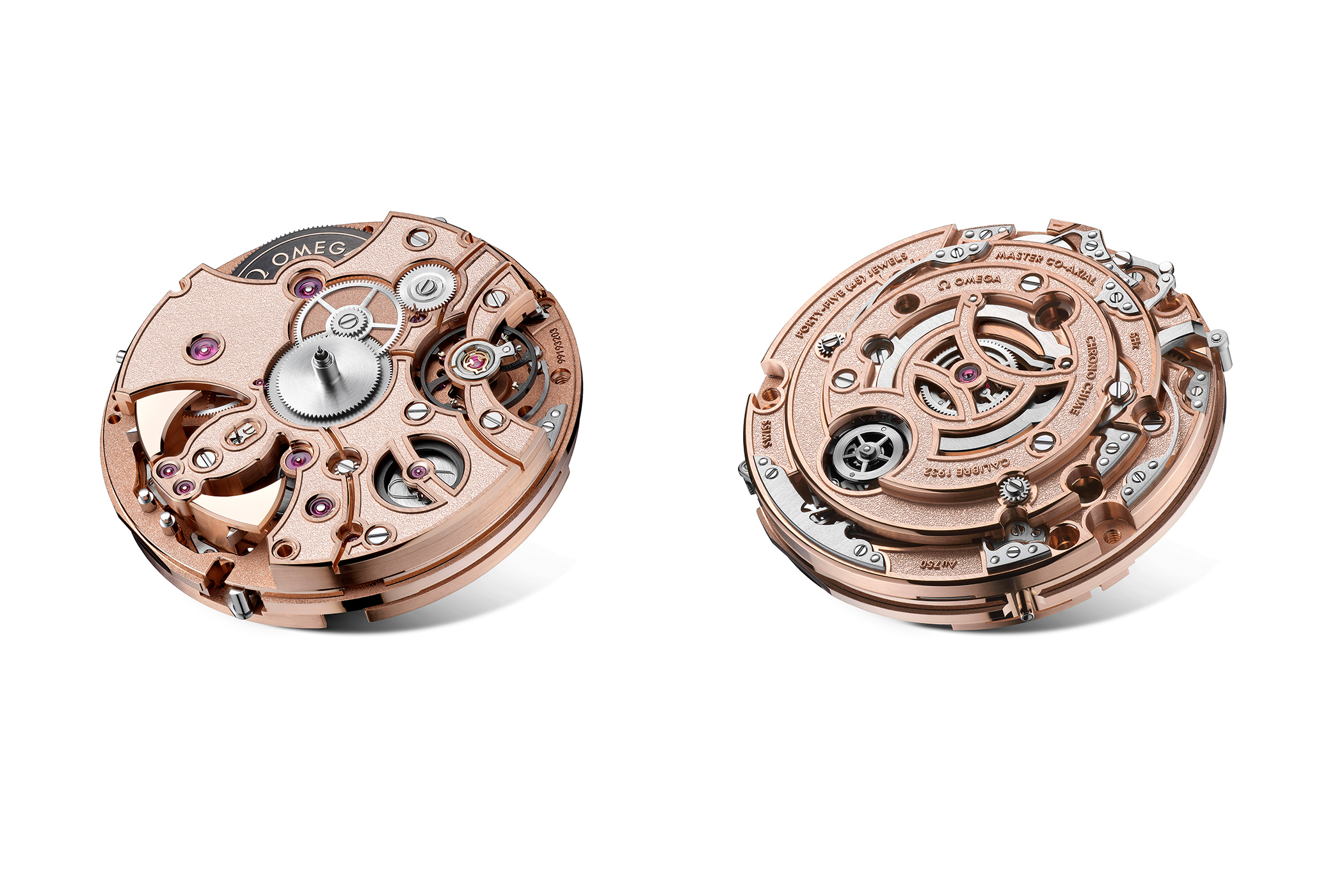
A total of 46.44 grams of gold is used in the sophisticated movement – this is said to produce a higher quality sound than platinum, not to mention that Sedna Gold produces a sound all its own compared to other similar materials. In total, no less than 13 patents have been filed for the development of this phenomenal movement (and the watch has four more). As can be seen on the caseback, Omega has not skimped on the finishing either, using satin and mirror brushes for a luxurious, luminous overall effect. Last but not least, the facts and figures: The Calibre 1932 has a power reserve of 60 hours, and of course Omega has achieved its goal for the brand new movement: the 1932 oscillates at a frequency of 5 Hz (36,000 vph).
Price & Availability
Finally, the answer to the most impossible question to calculate: the price. The price of the new Speedmaster Chrono Chime is CHF 450,000, which takes this Omega Speedmaster into a realm none of us have ever seen before. The watch comes in a walnut case with a special ‘Making Of’ manual, a magnifying glass, a certificate of authenticity, the coveted Master Chronometer certification card and a five-year international warranty card. The Speedmaster Chrono Chime also goes all out when it comes to the bracelets: it comes with a matching Sedna Gold Speedy bracelet, which has the same features as those in the current Speedmaster collection.
Meanwhile, the Olympic 1932 Chrono Chime is worn on a brown leather strap that fastens with a plain Sedna gold buckle. To top it all off, this historic collector’s item costs CHF 420,000, making it an interesting proposition for true Omega and haute horlogerie fans alike.
FEATURES
Olympic 1932 Chrono Chime
Olympic 1932 Chrono Chime: 522.53.45.52.04.001
Olympic 1932 Chrono Chime: 45 mm x 16.9 mm
Olympic 1932 Chrono Chime: Grand Feu enamel
Olympic 1932 Chrono Chime: Brown leather strap with Sedna Gold buckle
Olympic 1932 Chrono Chime: CHF 420,000
